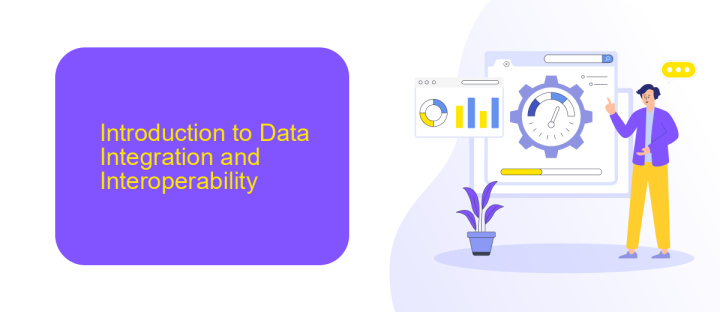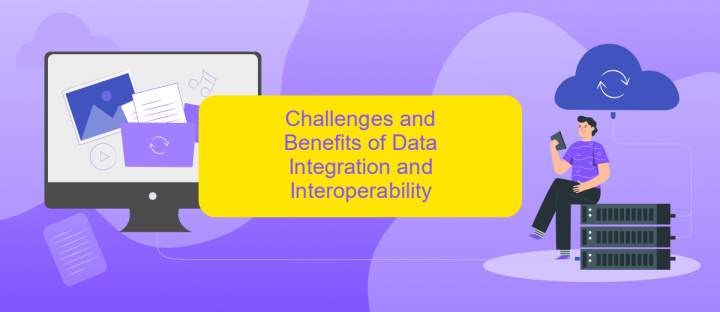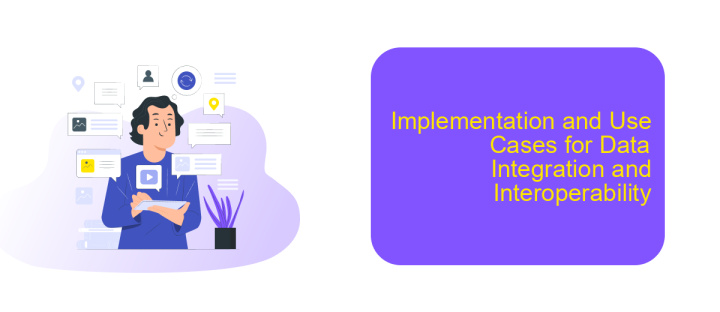Data Integration and Interoperability
In today's data-driven world, the seamless integration and interoperability of data systems are crucial for effective decision-making and operational efficiency. Data integration involves combining data from different sources into a unified view, while interoperability ensures that diverse systems and organizations can work together seamlessly. This article explores the importance, challenges, and best practices of achieving robust data integration and interoperability.
Executive Summary
Data integration and interoperability are critical for modern enterprises, enabling seamless data flow across diverse systems and applications. Effective integration ensures that data from various sources can be combined, accessed, and analyzed efficiently, leading to improved decision-making and operational efficiency.
- Streamlined data management
- Enhanced data accuracy and consistency
- Improved collaboration across departments
- Reduced operational costs
Services like ApiX-Drive facilitate data integration by offering powerful tools to connect various applications and automate workflows. By leveraging such platforms, businesses can achieve robust interoperability and ensure that their data ecosystems are both scalable and resilient. This ultimately supports strategic goals and drives innovation.
Introduction to Data Integration and Interoperability

Data integration and interoperability are critical components in the modern digital landscape, enabling seamless communication and data exchange between diverse systems and applications. By integrating data from various sources, organizations can achieve a unified view, which enhances decision-making processes and operational efficiency. Interoperability ensures that different systems can work together harmoniously, facilitating the smooth flow of information and minimizing data silos.
One effective way to achieve data integration is through the use of specialized services like ApiX-Drive. ApiX-Drive simplifies the process by providing a user-friendly platform that connects various applications and automates data workflows. This service allows businesses to effortlessly synchronize data across multiple platforms, ensuring consistency and accuracy. By leveraging such tools, organizations can reduce manual data handling, minimize errors, and improve overall productivity.
Challenges and Benefits of Data Integration and Interoperability

Data integration and interoperability are critical for organizations aiming to streamline their operations and improve decision-making processes. However, these processes come with their own set of challenges and benefits that need to be carefully considered.
- Complexity: Integrating data from multiple sources can be technically complex and time-consuming.
- Cost: Implementing and maintaining data integration solutions can be expensive.
- Data Quality: Ensuring the accuracy and consistency of integrated data is often a significant challenge.
- Security: Protecting sensitive data during integration is crucial but challenging.
- Scalability: As organizations grow, their data integration needs become more complex and require scalable solutions.
Despite these challenges, the benefits of successful data integration and interoperability are substantial. Organizations can achieve more efficient workflows, better data accuracy, and enhanced decision-making capabilities. Services like ApiX-Drive simplify the integration process by offering user-friendly tools to connect various applications and automate data workflows, making it easier for businesses to overcome these challenges and reap the benefits of seamless data integration.
Implementation and Use Cases for Data Integration and Interoperability

Implementing data integration and interoperability involves several key steps and considerations. First, organizations need to identify the data sources and systems that require integration. This may include databases, cloud services, and various software applications. Once identified, the next step is to establish a clear data integration strategy, which outlines the methods and tools to be used.
One effective tool for facilitating data integration is ApiX-Drive. This service enables seamless data transfer between different systems and applications without requiring extensive coding knowledge. ApiX-Drive supports a wide variety of integrations, making it a versatile solution for many organizations.
- Automating data synchronization between CRM and marketing platforms.
- Integrating e-commerce platforms with inventory management systems.
- Connecting financial software with business intelligence tools for real-time reporting.
Use cases for data integration and interoperability are vast and varied. For instance, in healthcare, integrating patient data from various sources can improve care coordination and outcomes. In finance, seamless data integration can enhance risk management and compliance efforts. By leveraging tools like ApiX-Drive, organizations can achieve more efficient and reliable data integration, driving better decision-making and operational efficiency.
- Automate the work of an online store or landing
- Empower through integration
- Don't spend money on programmers and integrators
- Save time by automating routine tasks
Conclusion
In conclusion, data integration and interoperability are crucial components for modern organizations aiming to maximize efficiency and maintain competitive advantage. The seamless exchange and consolidation of data from various sources enable informed decision-making and foster innovation. By addressing challenges such as data silos, inconsistent formats, and security concerns, businesses can achieve a more cohesive and agile data environment.
Tools like ApiX-Drive play a pivotal role in simplifying the integration process, offering a user-friendly interface and robust capabilities for connecting disparate systems. By leveraging such services, organizations can automate workflows, reduce manual errors, and ensure real-time data synchronization. Ultimately, investing in reliable data integration solutions not only streamlines operations but also paves the way for future growth and adaptability in an ever-evolving digital landscape.
FAQ
What is data integration?
Why is data interoperability important?
What challenges are commonly faced in data integration projects?
How can automation help in data integration?
What are the best practices for ensuring successful data integration?
Strive to take your business to the next level, achieve your goals faster and more efficiently? Apix-Drive is your reliable assistant for these tasks. An online service and application connector will help you automate key business processes and get rid of the routine. You and your employees will free up time for important core tasks. Try Apix-Drive features for free to see the effectiveness of the online connector for yourself.


